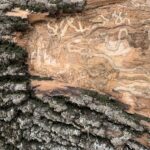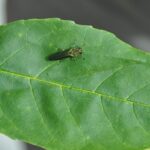Table of Contents
ToggleLast Updated on November 14, 2024
Do you have an ash tree on your property? Have you been treating it for the Emerald Ash Borer? If the answer is yes, you should continue to have your arborist treat them for the foreseeable future. If you answered no, chances are the tree is dead, or close to it due to the Emerald Ash Borer. If you haven’t been treating the tree, removal of the ash tree should be high on your list of priorities. Dead or dying ash trees can be a safety hazard.
Ash trees in our area have been under attack from the Emerald Ash Borer since it was first confirmed in Bridgewater, New Jersey in 2014. These insects are believed to have hitched a ride from Asia on shipping pallets to ports in Michigan, where they were first detected in 2002. Since then, they have wreaked havoc on ash trees throughout the country.
In many parts of the country, the ash tree is a native species and grows in forested areas. It was until recently, a desirable street tree in neighborhoods for their shape and ability to provide much needed shade to properties. Unfortunately for the ash trees that grew in the forest, most have succumbed to the damage caused by the Emerald Ash Borer (EAB). The damage is evident as you drive along Routes 287, 78, and 80 in New Jersey during the summer months. If you see clusters of dead trees in the woods, chances are they are ash trees.
The Emerald Ash Borer Life Cycle
The EAB larvae damage and eventually kill the trees by feeding on the cambium. This is where fluids and nutrients translocate through the tree. Since the larvae of the EAB create galleries in the cambium, it blocks the flow of water and nutrients moving up from the roots. In most cases, ash trees will exhibit signs of decline from the top down as the larvae work their way down the tree over the next couple of years. The average time from initial infestation to death is two to four years.
The adult EAB is metallic green with a flat head and will fit on a penny. It flies around during the early summer while feeding on the leaves of ash trees before mating. Eggs are laid, and the larvae are born a few weeks later. The larvae will feed throughout the winter and into the following spring before turning into adults. As the adults emerge, they leave holes in the tree that are “D” shaped and slightly smaller than a pencil eraser. The rule of thumb is if you can see these holes at the bottom of an ash, it is likely too late to treat the tree. You may also see what is known as “blonding.” This is where woodpeckers are pecking away at the bark looking for these insects. Other tell-tale signs of EAB are bark flaking and sucker growth.
When is it time to remove the Ash Tree?
If you have ash trees on your property that are dead or declining, it is important to have them removed sooner rather than later. Ash trees can drop large limbs without warning once they have been decimated by the EAB, potentially causing damage to your property. Why is that? The larvae feed on the cambium and the galleries disrupt the flow of water and nutrients, the tree dries out very quickly and becomes extremely brittle. In fact, many tree companies will not climb dead ash trees because of how brittle they are.
Depending on the location of the tree, they may use a bucket truck or crane if they can’t just drop the tree as a whole and cut it up on the ground. The more dangerous trees would be along sidewalks, roads, over a deck or a play area, next to a house, or over a driveway where a car could be parked. If you have damaged ash trees it would be best to remove them sooner rather than later.
If you elect to have your ash tree removed, it is important to hire a certified arborist. A list of state licensed tree experts can be found on njtreeexperts.org. A certified arborist should be able to do a risk assessment of the ash tree to determine its health and the best course of action.
Conclusion
Currently, the Emerald Ash Borer will continue to cause damage to ash trees for the foreseeable future. For the ash trees that are not treated professionally, there is a good chance they are already severely damaged. Before the tree has a chance to fall and damage your home or property, it is highly recommended to have an arborist remove the tree. If you have ash trees on your property and would like to talk to a professional, give our office a call at 908-281-7888 or request a free estimate online.




